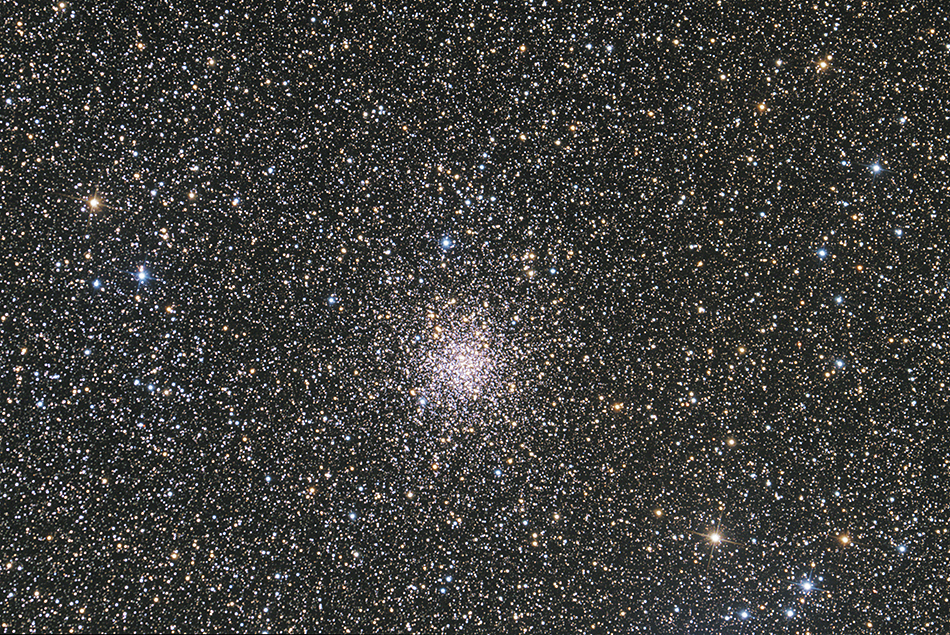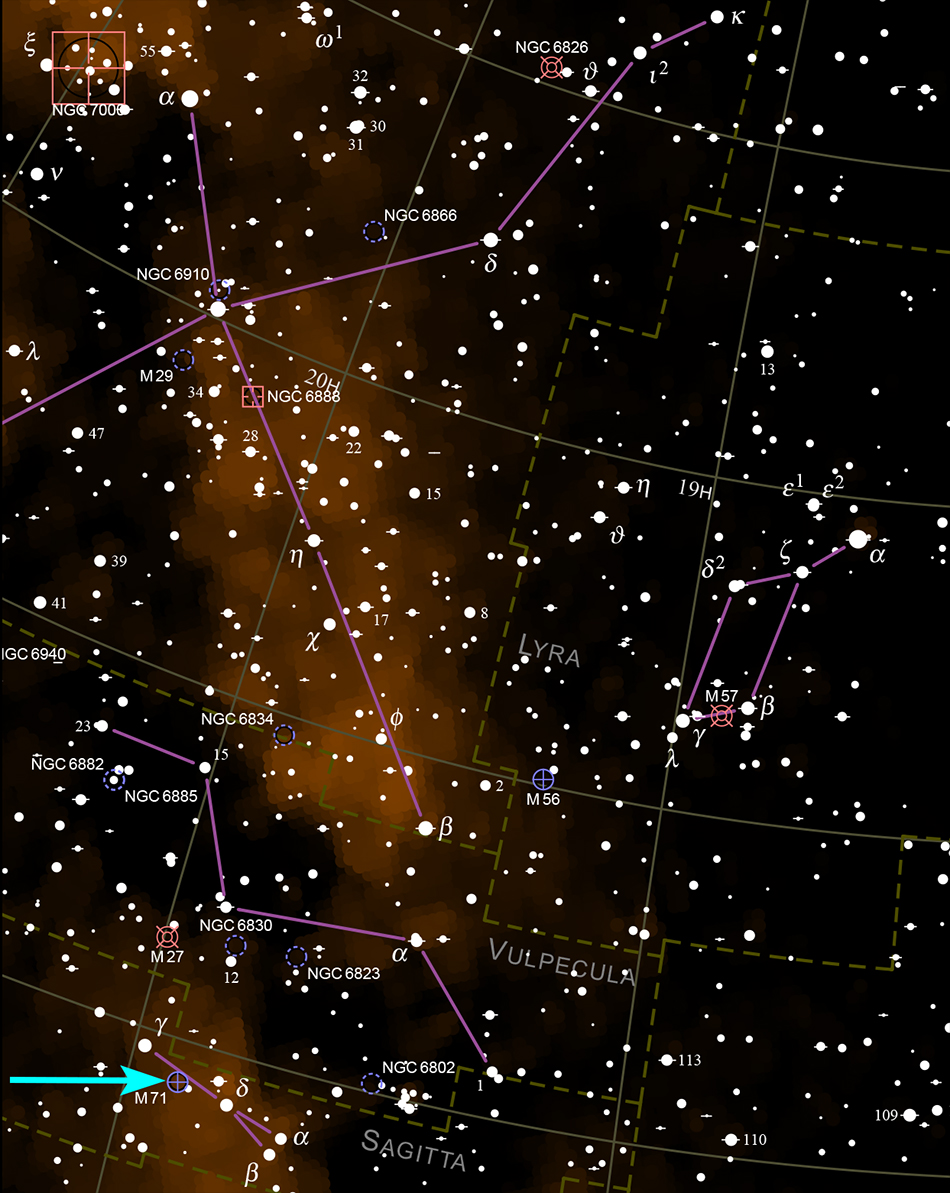

| Object name: | Constellation: | Coordinates: | Apparent size: | Visual brightness: |
|---|---|---|---|---|
| Messier 71 (= NGC 6838) |
Sagitta | 19h54m / +18°47' | 7.2' | 8.2 mag |
The globular cluster Messier 71 (NGC 6838) in the constellation Sagitta. Until the 1970s, Messier 71 was thought to be a densely packed open cluster and was classified as such due to a lack of a dense central condensation, a rather high metallicity of its stars (abundance of elements heavier than helium) and a lack of RR Lyrae variable stars. However, modern photometry has detected a short horizontal branch in the Hertzsprung-Russell diagram, which is characteristic for globular clusters. Messier 71 is now known as a rather young, loosely concentrated globular cluster. It is about 13,000 light-years from Earth and was discovered by Swiss astronomer Jean-Philippe Loys de Chéseaux in 1745 (source: Wikipedia).
Twenty-four 3-minute exposures (72 minutes total exposure) at gain 100 taken on August 3, 2022, were added for this shot with the Astro Pixel Processor (APP) software and the final image processing was done in Photoshop. Darks, flats, bias and dark flats were used.
Equipment: Cooled ASI 2600MC Pro camera, TeleVue Paracorr Type II coma corrector, 16" f/4.5 "Ninja" dobsonian telescope riding on a dual-axis Tom Osypowski equatorial platform, Lacerta MGEN autoguider, Lacerta off axis system.
